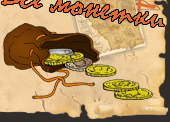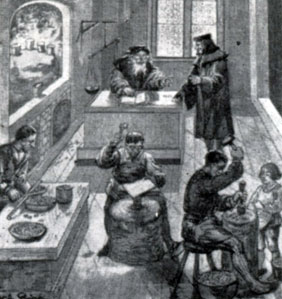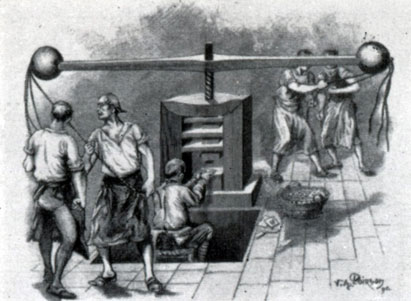
Foreword
Representations of various architectural structures, - churches, towers, fortress walls and town gates, - can be found on coins even of the early Middle Ages. As a rule, however, they are of an indefinite character; it is not always possible to connect them with one or another historically known building. But beginning with the epoch of the Renaissance, city views on coins are often reproduced with documental exactness, and are distinguished for their high artistic expressiveness.
From the thirteenth century, the rapidly developing trading centres of Europe received the right to establish their own mints. Urban views appeared especially on the coins struck in these towns (although such pictures can be met with also on coins of the feudal nobility, - kings, dukes, archbishops). There were comparatively many coins with pictures of German towns, chiefly of such towns as Regensburg or Nurnberg; there was the thaler with views of Swiss towns: Constance, Zurich, Basel, and of the Polish Baltic towns: Gdansk and Thorn (Thorun).

Illustrations on coins were executed by die-cutters and medal-makers, who usually passed on their art from generation to generation. Thus, the dies for the double Nurnberg thaler of Karl VI was engraved by Georg Friedrich Niirnber-ger (his issues are mostly signed G. F. N.). Like his father and grandfather, he worked as a mint-master at the Nurnberg Mint, and was the author of dies for many gold and silver coins struck in the town of Nurnberg between 1682 and 1724. The Bergwerkthaler of 1733 was created by the medallist and mint-engraver of the Dresden Mint, - Johann Wilhelm Hoeckner. The die of the Gdansk donativum of 1644 was engraved by Gerhard Rogge, die of the Munster one-and-a-half thaler of 1648 - by Engelbert Kettler, die of the Hamburg thaler of 1717 - by Johann Christoph Reteke (Retecke). But it happened quite often that the name of the mint-engraver remained unknown.

The appearance of city views on coins is closely connected with the mintage of large gold and silver coins, and particularly with the progress achieved in the technique of striking. In Europe of the Middle Ages coins were made by hand; for this reason, there was practically no possibility to produce large coins with complex pictures requiring fine workmanship. In the sixteenth and seventeenth centuries there came into existence the so-called "hammering" machine, and then the weighted lever, - a mechanism that worked by the same principle as the money press, - which possessed the force necessary for producing large coins, and which did not distort the design of the dies. The striking of gold coins of approximately 3.5 grammes (the florin, seguin, ducat) began in thirteenth century in Italian trading towns, - Florence, Genoa, Venice, - and spread all over Europe. The minting of large silver coins began in the late fifteenth and early sixteenth centuries: - the diameters of the coins were over 40 mm; they received the name of thaler (yefimok, crown, ecu, and others).

Pictures of towns appeared also on commemorative coins, which were issued in memory of some triumphal events, or in honour of certain individuals. Often these coins differed only in weight (strictly established for money) from the contemporary medals of that time. In the sixteenth to seventeenth centuries gold commemorative coins were minted almost equal in weight to ducats. These coins, which were named donativs, were presented as gifts to the king and his retinue. The Polish donativ, which was sometimes equal in weight to one hundred ducats, became especially famous. The Bergwerkthalers, struck from metal of a definite mine, were variants of the commemorative coins. The name of mine, and usually a picture of the mine itself, was on each coin.
Beginning with the thirteenth century, osellas were issued annually in Venice; these were presentation pieces which were given as gifts by the nobility of Venice to doges during the New Year holidays. Osellas were circulated as ordinary money.
Coins with views of European towns are interesting not only as historical and cultural records of the sixteenth to eighteenth centuries; they are also valuable as artistic productions. The best specimens clearly show the artist's skill to emphasize the most characteristic features of the town depicted. Besides this, the coins are evidence of the brilliant compositional mastery and subtlety of execution of the authors.
|
ПОИСК:
|
© VseMonetki.ru, 2001-2020
При использовании материалов сайта активная ссылка обязательна:
http://vsemonetki.ru/ 'Нумизматика и бонистика'
При использовании материалов сайта активная ссылка обязательна:
http://vsemonetki.ru/ 'Нумизматика и бонистика'